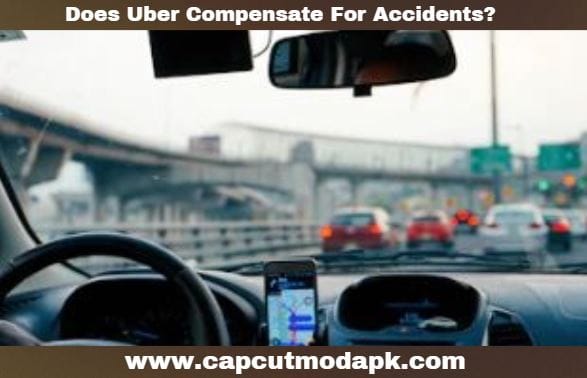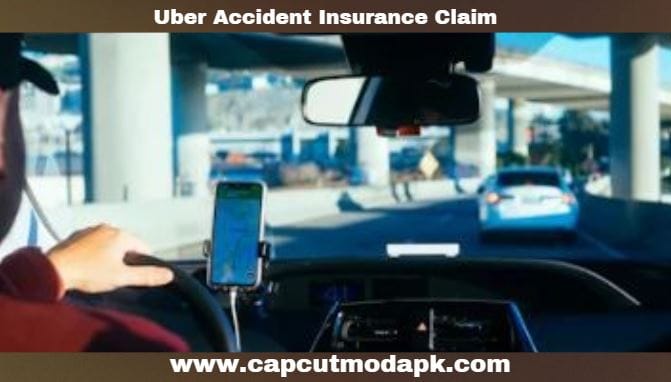Rideshare services like Uber have become an integral part of daily commuting for millions of people. However, accidents can happen, and understanding the insurance coverage that applies in such situations is crucial. Whether you’re a driver or a passenger, an Uber accident insurance claim can be complex and may require careful navigation. In this article, we will break down the insurance coverage available to both drivers and passengers, how to file an Uber accident insurance claim, and what to do if you’re involved in an accident.
Uber provides insurance coverage for drivers during different stages of the ride, but the specifics of coverage vary based on the circumstances. It’s important to understand when Uber’s insurance applies and what happens if you’re involved in an accident while using the platform. For example, while the company provides coverage when drivers are en route to pick up a passenger or when they have a passenger in the car, there are gaps in coverage during other times. Knowing your rights and understanding the terms of Uber’s insurance policy can help you ensure that you are fully protected.
Additionally, if you’re a passenger in an Uber, understanding the insurance that covers you in the event of an accident is essential. Uber provides liability coverage for passengers in case of an accident, but this coverage also depends on the circumstances of the incident. If you’re involved in an Uber accident, knowing how to file a claim and what documentation you need can help you navigate the process more efficiently.
Also, Read
What Types of Uber Accident Insurance Are Available?
Uber offers several types of insurance coverage for drivers and passengers. Each type of coverage depends on the phase of the ride and whether the driver is actively transporting a passenger. Understanding the differences between these types of coverage will help you know what to expect after an accident.
1. Driver’s Personal Auto Insurance
Before Uber’s insurance kicks in, the driver’s personal auto insurance is the primary coverage in case of an accident. This is important to note because, if the driver is not logged into the Uber app or is not available for a ride, their personal insurance will apply. However, the personal auto insurance of the driver will not cover accidents that occur while they are actively using the Uber platform, unless they have rideshare insurance.
2. Uber’s Insurance While Online but Not Yet En Route
If the Uber driver is logged into the app and available to accept a ride but is not yet on the way to pick up a passenger, Uber’s insurance coverage will apply. This coverage includes:
- Liability Insurance: Uber provides up to $50,000 in bodily injury liability coverage per person, with a maximum of $100,000 per accident.
- Property Damage Insurance: Uber covers up to $25,000 for property damage during this phase.
This is the first level of coverage that applies after a driver is online but has not yet accepted a ride.
3. Uber’s Insurance While En Route to Pick Up a Passenger or During the Ride
When the driver is on the way to pick up a passenger or has a passenger in the car, Uber’s insurance coverage is more robust:
- Liability Insurance: Up to $1 million in liability coverage applies in case of an accident.
- Uninsured/Underinsured Motorist Insurance: Uber provides up to $1 million in uninsured or underinsured motorist coverage if the driver is involved in an accident with a driver who lacks adequate insurance.
- Contingent Collision and Comprehensive Insurance: Uber also provides contingent collision and comprehensive coverage, which helps pay for damages to the Uber driver’s vehicle, though the driver is required to have a comprehensive or collision insurance policy themselves.
This coverage applies to the driver as well as the passengers in the car, ensuring that both are protected in case of an accident during this stage.
4. Uber Insurance After the Ride is Complete
Once the ride ends, Uber’s insurance coverage generally ends as well. If the driver is still logged into the app after dropping off the passenger but is not engaged in any active rides, their personal auto insurance will again be the primary coverage. However, if the driver continues to use the app while not transporting passengers, there will be gaps in coverage.
Does Uber Compensate For Accidents?

Yes, Uber compensates for accidents, but the coverage depends on the situation. Uber provides different levels of insurance for drivers and passengers, based on the stage of the ride. For drivers, Uber’s coverage begins only when the driver is logged into the app and available for rides. If the driver is offline or not using the app, their personal auto insurance is the primary coverage. If the driver is online but hasn’t accepted a ride, Uber provides limited liability and property damage insurance. Once the driver is on the way to pick up a passenger or has one in the car, Uber provides up to $1 million in liability insurance, contingent collision coverage, and uninsured/underinsured motorist coverage.
For passengers, Uber offers liability coverage up to $1 million in case of an accident, regardless of fault. If the driver is at fault and the other driver lacks sufficient insurance, Uber’s uninsured/underinsured motorist coverage can apply. Passengers involved in accidents should contact Uber immediately, file a police report, and gather evidence such as photos and medical records. Uber typically works directly with its insurance company to resolve the claim, but passengers may need to follow up to ensure fair compensation.
There are gaps in coverage to be aware of, though. Uber’s insurance doesn’t apply when the driver is offline or driving for personal use. In these situations, the driver’s personal insurance applies, which may not cover all incidents. If Uber denies a claim or offers insufficient compensation, both drivers and passengers can dispute the decision or seek legal advice to ensure fair treatment. Understanding Uber’s insurance policies and knowing when they apply helps navigate the claims process effectively.
How to File an Uber Accident Insurance Claim
Filing an Uber accident insurance claim can be a straightforward process, but it depends on the details of the accident. Whether you are a driver or a passenger, understanding the necessary steps can make the process smoother. Here is a step-by-step guide on how to file an Uber accident insurance claim.
1. Ensure Safety and Report the Accident
The first step is always safety. Make sure everyone involved in the accident is okay and move to a safe location if possible. After ensuring safety, you must report the accident to the relevant authorities. This includes calling the police and filing an official accident report. This is important because the police report will serve as an essential piece of evidence when filing your claim.
2. Gather Evidence
It’s crucial to document everything at the scene of the accident. Take photos of the accident, the vehicles involved, any damages, and any injuries sustained. You should also gather information from the other driver(s), including their name, contact details, and insurance information. If there are any witnesses to the accident, get their contact information as well.
For passengers, it’s important to capture the Uber ride details, such as the ride receipt, driver’s information, and the exact time and location of the accident.
3. Contact Uber and Your Insurance Company
Once you have reported the accident and gathered evidence, you should notify Uber of the accident. You can contact Uber through the app or by visiting the Uber website to report the incident. They will collect the details of the accident and begin the claims process.
If you are a driver, you must also contact your personal insurance company to report the accident and inform them whether or not Uber’s coverage applies. Your insurance company will guide you on how to proceed with the claim.
4. File the Claim
After reporting the accident, you can proceed to file your claim with Uber’s insurance provider. If you are a passenger, Uber will initiate the claims process, and you will work with Uber’s insurance company to receive compensation. If you are a driver, Uber’s insurance provider will work with you directly to evaluate the accident and determine the extent of coverage.
Depending on the complexity of the accident, it may take time to resolve the claim. Uber typically communicates with drivers and passengers throughout the process to keep them updated on the progress.
What to Do If Uber’s Insurance Denies Your Claim
If Uber’s insurance denies your claim or offers a settlement that you believe is insufficient, you have several options to pursue further compensation. Here are the steps you can take:
| Step | Description |
|---|---|
| Review Your Policy | Carefully review Uber’s insurance terms and conditions to ensure that the coverage should apply to your accident. |
| Consult with an Attorney | If your claim is denied, it may be helpful to consult with an attorney specializing in accident claims. |
| Appeal the Denial | Work with your attorney to file an appeal and provide any additional evidence to support your case. |
| Pursue Personal Injury Lawsuit | If Uber’s insurance continues to deny your claim, you may file a personal injury lawsuit against the responsible party or Uber. |
| Consider Mediation | Sometimes, mediation can be a quicker and less costly solution to resolve disputes. A neutral third party helps facilitate a settlement between you and Uber. |
If you find yourself facing a denied claim or inadequate settlement, it’s essential to understand your rights and explore all available options for further compensation. Consulting with an attorney can provide you with the necessary legal support to pursue justice.
Common Uber Accident Insurance Claim Mistakes to Avoid
Navigating the insurance claims process can be tricky, and many individuals make mistakes that can hurt their chances of receiving fair compensation. Here are some common mistakes to avoid when filing your Uber accident insurance claim.
| Mistake | How to Avoid |
|---|---|
| Not Reporting the Accident Immediately | Always report the accident to the police and Uber as soon as possible to ensure a timely claim process. |
| Failing to Gather Evidence | Document the scene thoroughly. Take photos and gather witness statements to support your case. |
| Accepting the First Settlement Offer | Don’t rush into accepting the first offer. Evaluate all damages and losses before agreeing to a settlement. |
| Not Contacting Your Insurance Company | Notify both Uber and your personal insurance company to ensure all coverage is applied properly. |
| Assuming Uber’s Coverage Will Always Apply | Be aware of when Uber’s coverage applies and when it does not. Understand the different phases of the ride. |
Avoiding these common mistakes will help you protect your interests and ensure that your claim is processed efficiently.
Conclusion
Filing an Uber accident insurance claim can be a complex process, but understanding the different types of coverage and knowing how to navigate the claims process will help you get the compensation you deserve. Whether you are a passenger or a driver, being informed about your rights, documenting the accident properly, and working with Uber’s insurance company will make the process smoother. If you face any difficulties, don’t hesitate to seek legal assistance to ensure that your claim is handled appropriately.


